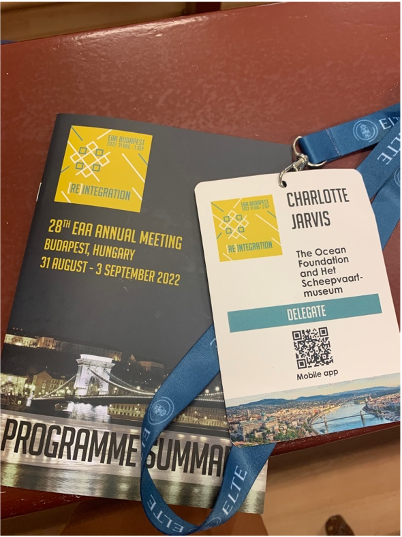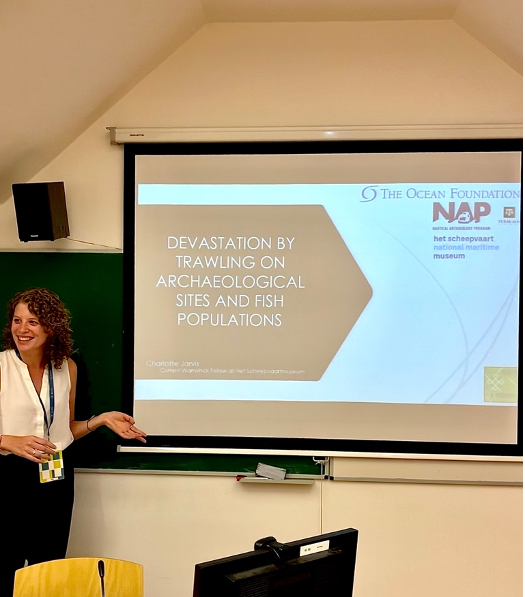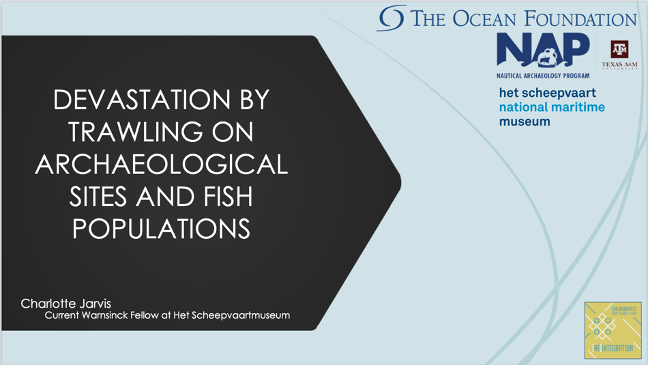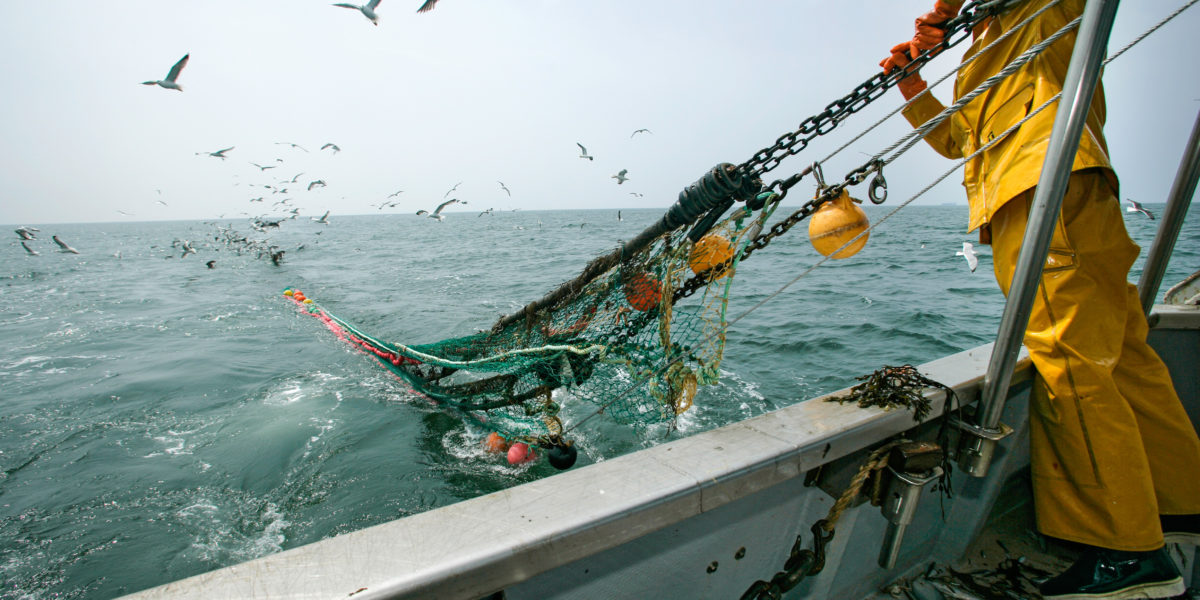Presented at the 2022 European Association of Archaeologists Annual Meeting
Trawling and Underwater Cultural Heritage

Since its first mention in a fourteenth-century English parliamentary petition, trawling has been recognized as a catastrophically damaging practice with lasting negative consequences on seabed ecology and marine life. The term trawling refers, at its simplest, to the practice of pulling a net behind a boat to catch fish. It grew from a need to keep up with declining fish stocks and developed further with technological changes and demands, though fishermen constantly complained about the problems in overfishing it created. Trawling has also had dramatic impacts on maritime archaeology sites, though that side of trawling does not get enough coverage.
Maritime archaeologists and marine ecologists need to communicate and work together to lobby for trawl bans. Shipwrecks are as much part of the marine landscape, and thus of importance to ecologists, as they are to the cultural, historical landscape.
Yet nothing has been done to seriously limit the practice and protect the underwater cultural landscape, and archaeological impacts and data are missing from biological reports on the process. No underwater policies have been formulated to manage offshore fishing based on cultural preservation. Some trawling restrictions have been placed after backlash in the 1990s and ecologists, well aware of the dangers of trawling, have lobbied for more restrictions. This research and advocation for regulation are a good start, but none of this stems from concern or activism by archaeologists. UNESCO has only recently raised concerns, and, will hopefully lead efforts to address this threat. There is a preferred policy for in situ preservation in the 2001 Convention and some practical measures for site managers to address the threats from bottom trawling. If in situ preservation is to be supported, moorings can be added and shipwrecks, if left in place, can become artificial reefs and places for more artisanal, sustainable hook-and-line fishing. However, what is most needed is for states and international fishing organizations to ban bottom trawling at and around identified UCH sites as has been done for some seamounts.
The maritime landscape includes historical information and cultural significance. It is not just the physical fish habitats that are destroyed—important shipwrecks and artifacts are lost too and have been since the beginning of trawling. Archaeologists have recently begun raising awareness about the impact of trawling on their sites, and more work is needed. Coastal trawling is particularly destructive, since that is where most known wrecks are located, but that does not mean awareness should be restricted to coastal trawling alone. As technology improves, excavations will move out to the deep-sea, and those sites must be protected from trawling too—particularly since this is where most legal trawling is occurring. Deep sea sites are also valuable treasure troves as, being inaccessible for so long, they have had the least anthropocentric damage being inaccessible for so long. Trawling will damage those sites too, if it has not already.
Deep Seabed Mining and Underwater Cultural Heritage
In terms of steps forward, what we do with trawling can pave the way for other important ocean exploitation. Climate change will continue to threaten our ocean (for example, sea level rise will sink previously terrestrial sites) and we already know ecologically, why it is important to protect the ocean.

Science matters, and while there are many unknowns regarding deep-sea biodiversity and ecosystem services, what we do know clearly points to vast and far-reaching damage. In other words, we know enough already from the existing trawling damage that tells us we should stop similar practices, like seabed mining, going forward. We must use the precautionary principal mandate shown by trawling damage and not start further exploitative practices like we seabed mining.
This is especially important with the deep-sea, as it is often left out of conversations about the ocean, which in turn has been, in the past, left out of conversations about climate and environment. But in fact, these things are all crucial features and deeply connected.
We cannot predict what sites might become historically significant, and thus trawling should not be allowed. Restrictions proposed by some archaeologists to limit fishing in areas of high historic maritime activity, is a good start but it is not enough. Trawling is a danger—to both fish populations and habitats, and to cultural landscapes. It should not be a compromise between humans and the natural world, it should be banned.
Trawling presented at EAA 2022

The European Association of Archaeologists (EAA) held their annual meeting in Budapest, Hungary from August 31 to September 3, 2022. In the Association’s first hybrid conference, the theme was Re-Integration and it welcomed papers that “incorporate the diversity of EAA and the multidimensionality of archaeological practice, including archaeological interpretation, heritage management and politics of the past and present”.
Although the conference is traditionally targeted at presentations that focus on archaeological excavations and recent research, Claire Zak (Texas A&M University) and Sheri Kapahnke (University of Toronto) hosted a session on coastal archaeology and the challenges from climate change that maritime historians and archaeologists will face going forward.

Charlotte Jarvis, an intern at The Ocean Foundation and a maritime archaeologist, presented in this session and made a call to action for maritime archaeologists and marine ecologists to collaborate and work towards more regulations, and preferably a ban, on trawling in the ocean. This tied in with TOF’s initiative: Working Toward a Dead Seabed Mining (DSM) Moratorium.








